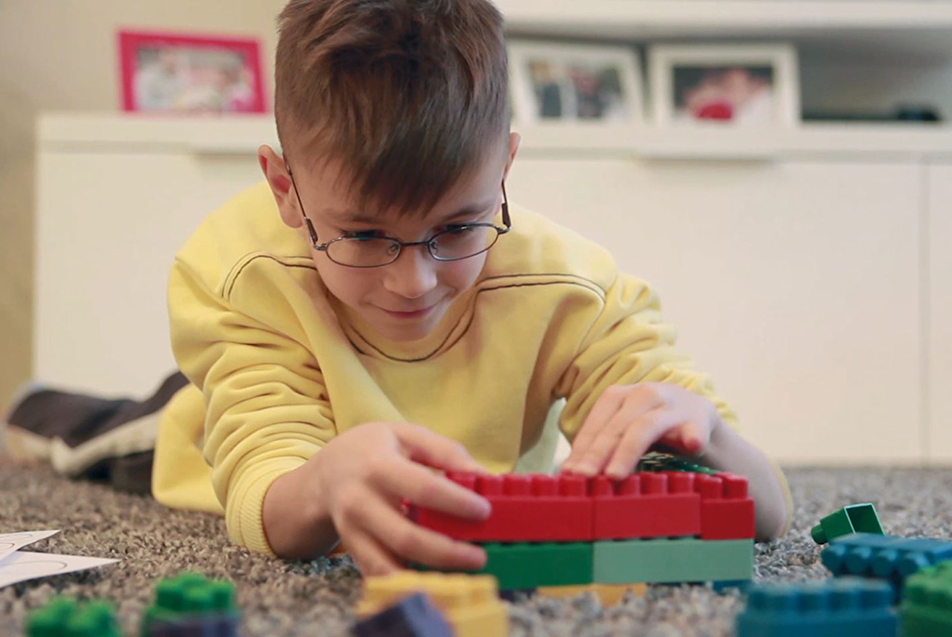We spoke with Lisa Bergeron, MD, PPG – Pediatric Developmental Care, about the risk factors for Autism Spectrum Disorder (ASD), how it presents, diagnosis and the importance of connecting patients and families to the appropriate resources.
Signs and symptoms
When a child has ASD, it’s difficult to determine what they’re thinking or feeling, because often they can’t communicate as clearly. This means that caregivers are often uncertain about what’s going on.
The first thing parents often notice is that their child is not talking like other children. Also, maybe they don’t play with other children. Perhaps the child is more interested in his/her own interests and not those of people around him/her. Sometimes we see some rigid or repetitive types of behavior. A child with ASD will tip toe or flip their hands. Their body might be tense quite frequently. We often see sensory issues, so they don’t like bright light or they love movement for periods of time. The rigid behavior might be around food, as in they’ll only eat a certain brand of macaroni and cheese or refuse to touch their sandwich unless it’s cut a certain way.
If parents are concerned around 2-2 ½ that their child is not speaking or socially interacting with others, they can bring their concerns to a therapist or physician’s attention. At that age we can do interactive play.
Risk factors
There are a few risk factors we see associated with ASD. For example, boys are 4-5 times more likely to have ASD than girls. According to the Centers for Disease Control and Prevention, 1 in 37 boys and 1 in 151 girls are affected by autism. Genetics play a role as well. If a family has one child with autism, there’s a 16-20 percent chance they will have another child with autism. Advanced maternal age can be a risk factor as well. It’s important to note that vaccinations are not a risk factor.

Diagnosis
ASD is diagnosed in a multidisciplinary setting because it’s associated with a lot of different aspects of a child’s development. The condition is not diagnosed as early as we’d like for it to be. The average age is 5 years and 4 months. We would prefer it was diagnosed around age 2 or 3. Caregivers might start picking up on signs around 18 months, because that’s when language starts taking off.
A diagnosis needs to be made by a neuropsychologist or developmental pediatrician. They will take an extensive history of the child, including eating patterns, social development and disposition. Depending on the child’s age, the provider might do STAT testing, which includes 12 different play scenarios where the provider can observe behavioral reactions. Does the child take turns, request help, imitate etc.? Some of these things are very difficult for children with ASD.
The provider might also use the MCHAT (revised), which is 20 questions the parents answer yes or no to. The physician will go through the diagnostic criteria for ASD in two sections (social communication and stereotypical rigid behaviors and sensory issues). If the child meets the criteria and historical evidence indicates ASD, that helps arrive at a diagnosis.
Resources
Once parents have received a diagnosis, it’s important to start by looking at what resources are available. You can work with your primary care provider or pediatrician to identify early intervention services like First Steps to see where the child’s developmental and social interaction level is. It’s vital that parents make sure the child gets intervention to help with developmental delays.
It can be very expensive, so we work to get families educated about things like the Family Support Waiver, which can help with the cost of some of those services not covered by insurance. There’s also the Autism Society of Indiana (ASI), where a family meets with another parent with a child with autism. They can help lead parents to other resources available and help with things like applying for Family Support Resources.
Other resources for families include Family Voices, Arc, About Special Kids and In Source. These are all helpful for organizations for families going through this process.
A diagnosis is difficult and impactful, but it helps to look at the whole picture. It’s your child and you’re going to love them no matter what. Lean on those who’ve been through it and connect with people and organizations who can help.
Read more about Dr. Bergeron and the work she’s doing in Pediatric Developmental Care.
Parkview opened an Applied Behavior Analysis (ABA) Clinic to provide one-on-one ABA therapy to kids 18 months to 7 years with a diagnosis of Autism Spectrum Disorder (ASD). The clinic serves kids who are covered members of a Parkview Signature Care health plan at this time. The intention is to work with other health plans to expand availability to additional families.



